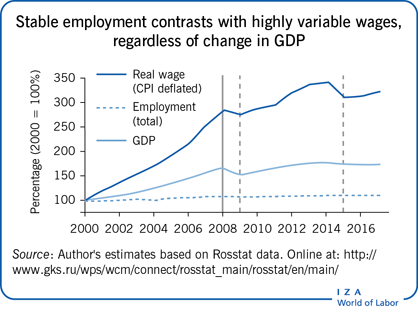Elevator pitch
Being the largest economy in the Eurasian region, Russia's labor market affects economic performance and well-being in several former Soviet countries. Over the period 2000–2017, the Russian labor market survived several deep crises and underwent substantial structural changes. Major shocks were absorbed largely via wage adjustments, while aggregate employment and unemployment showed little sensitivity. Workers have paid the price for this rather stable employment situation in the form of volatile wages and a high risk of low pay.

Key findings
Pros
Employment has remained high, while unemployment has remained low.
Flexible wages help absorb economic shocks.
The education level of the workforce is high and keeps rising.
There is no evidence to date of job polarization caused by the erosion of middle-skilled jobs.
Earnings inequality has gradually declined.
Cons
Employment is becoming more heterogeneous, unstable, and insecure.
Earnings inequality is still high.
The country’s unemployed suffer from weak unemployment protection.
There is a high incidence of low-paying jobs and this situation has persisted over time.
The labor market may be at risk of over-education, with signs of declining educational premia appearing.